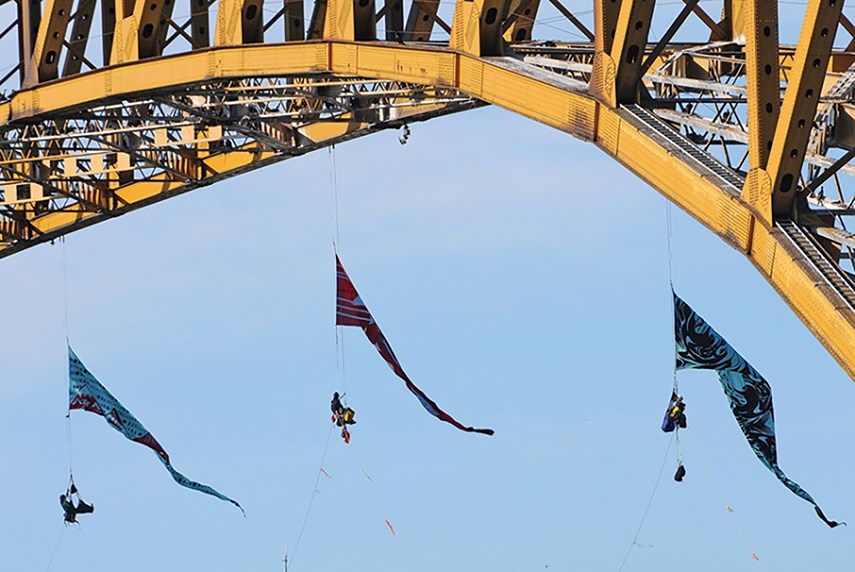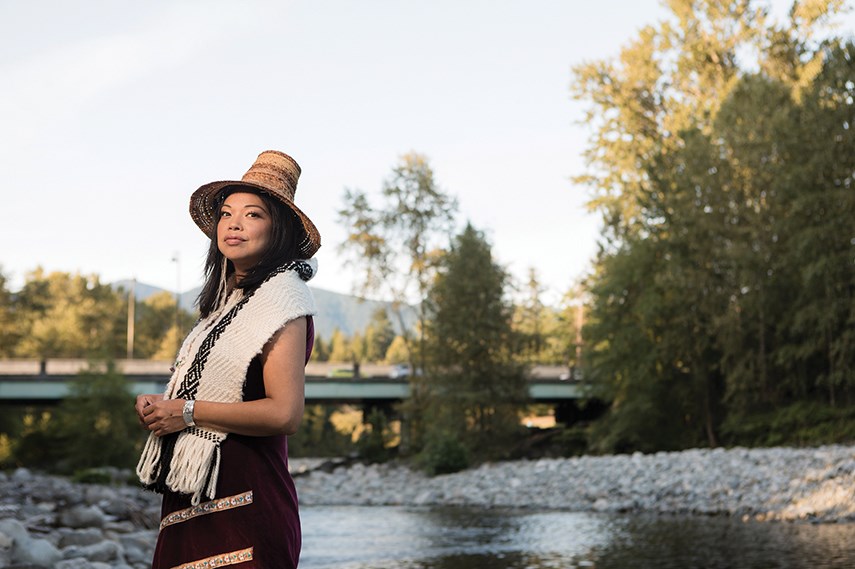Acts of Resistance, Museum of Vancouver, 1100 Chestnut St, Vancouver. Exhibition showcases the artwork of seven Indigenous artist/activists whose designs flew from the Ironworkers Memorial Second Narrows Crossing on July 3 and 4, 2018, as part of the Greenpeace action Project Sparrow to protest the Trans Mountain Expansion Pipeline (TMX) project, Museum of Vancouver, 1100 Chestnut St., Vancouver. Runs until July (museumofvancouver.ca/acts-of-resistance).
Panel discussion exploring individual art practices and approaches to designing “protest art,” in connection with work commissioned for Project Sparrow. Thursday, March 5, 7 p.m. Admission: $17 adults, $16 MOV members and students. Free for individuals who self-identify as Indigenous. Event ticket includes free admission to feature exhibitions Acts of Resistance, Haida Now: A Visual Feast of Innovation and Tradition and c̓əsnaʔəm, the city before the city (regular price $20.50).
Four Coast Salish artists featured in the Museum of Vancouver’s current exhibition, Acts of Resistance – Ronnie Dean Harris, Marissa Nahanee, Ocean Hyland and Brandon Gabriel – will speak about their involvement in the 2018 Greenpeace Canada action Project Sparrow in a special panel discussion at the museum on March 5.
The Project Sparrow blockade on July 3 and 4, 2018, featured seven 40-foot streamers flown by activists suspended beneath the Second Narrows bridge. The 38-hour action was carried out by a group of 12 and drew media attention from all over the world creating global awareness of the opposition to the Trans Mountain expansion project.

According to MOV, the streamers on display “serve as visual reminders of the First Nations territories and communities compromised by the pipeline expansion. Indigenous Nations have struggled to protect their land entitlement, cultural heritage and basic human rights since European contact. Indigenous design motifs and displays of visual culture effectively serve as symbolic and lived opposition to discourses and practices of colonization: they signal an inexplicable connection to the land and its biodiversity, while expressing the obligation of Indigenous peoples to protect their traditional territories. When artists invoke traditional designs in a protest setting their presence can deliver cracks to dominant discourses and increase awareness to environmental and social injustices, propelling necessary dialogue.”
The four Coast Salish artists participating in the panel discussion are: Brandon Gabriel (Kʷələxʷəlstən), a mixed-media visual artist, designer, muralist, activist and educator, born and raised in the Kwantlen Nation community; Ocean Hyland, a səl̓ílwətaʔɬ artist and activist, who recently had an op-ed piece published in Teen Vogue and is currently studying the Skwxwu7mesh language; Marissa Nahanee (Maykw Cha7em), a member of the Squamish and Nisga’a Nations Eagle Clan, who previously worked with the Four Host First Nations Secretariat (FHFN) during the Vancouver 2010 Olympic and Paralympic Winter Games and has also appeared in television productions and in documentary films such as Marie Clements’ The Road Forward; and Ronnie Dean Harris, a.k.a. Ostwelve, a Stō:lo/St’át’imc/Nlaka’pamux multimedia artist based in Vancouver.




